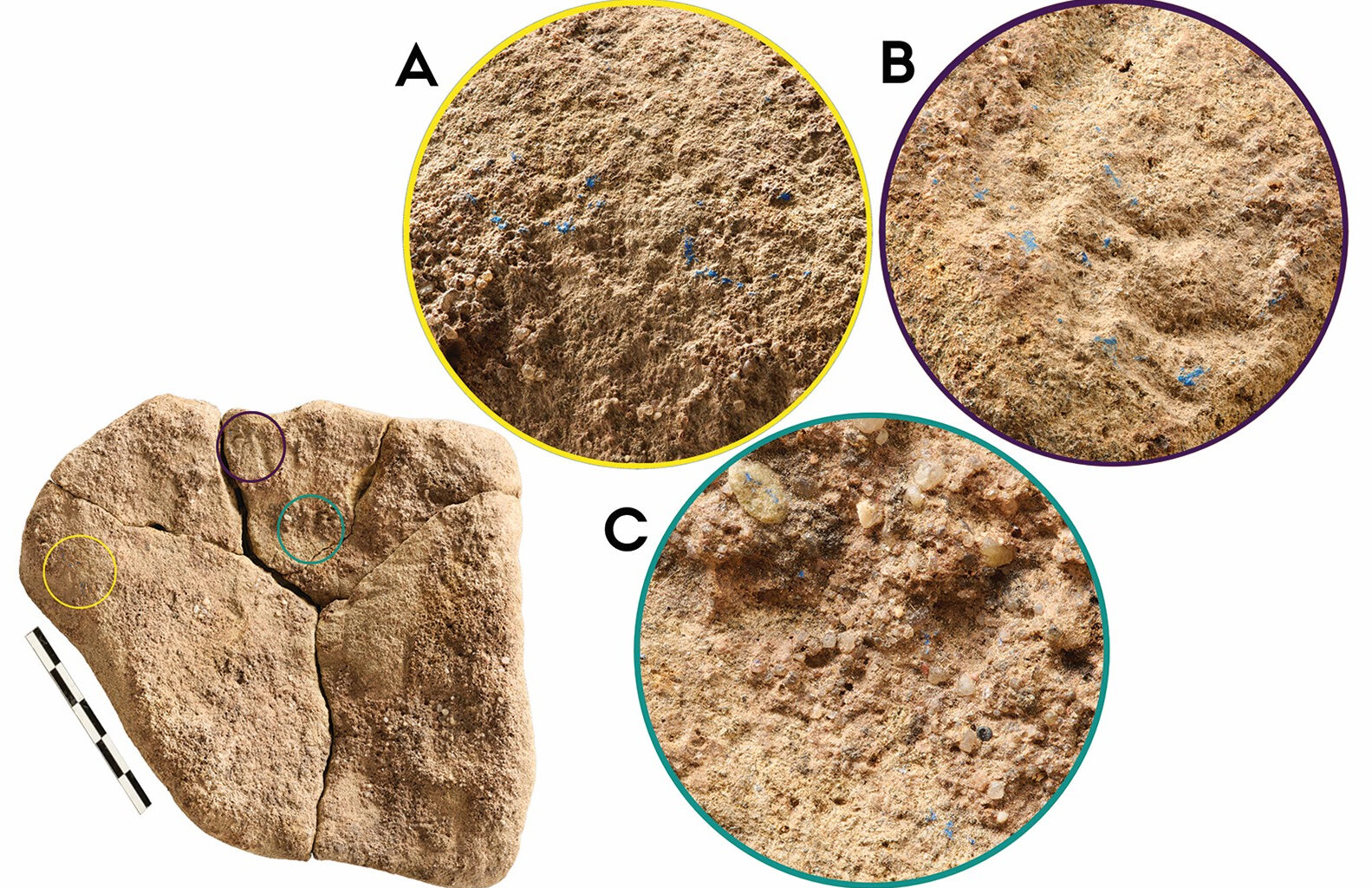The discovery of Europe’s oldest blue pigment at Mühlheim-Dietesheim in Germany rewrites the timeline of Palaeolithic colour exploration to 13,000 years ago.
The blue pigment was discovered on a stone object which was initially interpreted as an oil lamp. The object contained three distinct blue stains which scientists verified through laboratory tests to be azurite – a vibrant, deep-blue mineral formed from the weathering of copper ore.
– Advertisement –
The results of the study, published in the journal Antiquity, demonstrates that early humans used a wider range of colours than previously thought for the purposeful pigment application in prehistoric times.
The previously available evidence showed that artists from this period typically used red and black pigments almost exclusively. Because blue pigments are absent from cave paintings, scholars long assumed that early Europeans either lacked access to them or deliberately chose not to use them.
However, new archaeological evidence reveals that early Europeans used azurite pigment for body decoration, fabric dyeing, and personal adornment—practices unlikely to leave lasting traces in the archaeological record.
“This challenges what we thought we knew about Palaeolithic pigment use”, says lead author of the study, Dr. Izzy Wisher from Aarhus University.
– Advertisement –
“The presence of azurite shows that Palaeolithic people had a deep knowledge of mineral pigments and could access a much broader colour palette than we previously thought – and they may have been selective in the way they used certain colours”, Dr Wisher says.
Header Image Credit : Antiquity Journal
Sources : Antiquity – https://doi.org/10.15184/aqy.2025.10184
– Advertisement –
